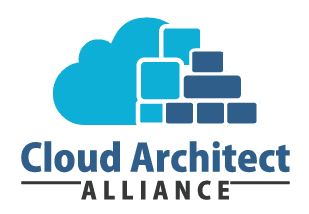
The 12th edition of the Cloud Architect Alliance event focused on Serverless Architectures. More than 80 IT professionals tried to answer the question that keeps coming back: can we really live without servers?
The obvious answer: no, as you still need servers to be ’serverless’. They’re there, but handled by a service provider. The real question of course was: is it useful in any way, or is it just another trend?
Bart Veldhuis, co-founder of the Cloud Architect Alliance, started the network event as usual, with a word of thanks – to sponsors IBM and NetApp. Both companies proved to be a logical and valuable addition to this edition. As a tech giant, IBM is of course also involved in serverless services. (At the time of writing, after the event, IBM acquired Red Hat, meaning it gained access to its serverless tool OpenShift Cloud Functions). NetApp recently acquired StackPointCloud and its container technology, thus allowing it to focus on that proposition as well.
Benefits versus risks
When Sander Nagtegaal (now CEO at Unless.com) coined that he had been deploying a serverless startup in 2015 (and blogged about it), commenters on HackerNews went crazy. Unlike the mostly negative comments then, Nagtegaal now proved how well a serverless setup has worked for him. “When you work serverless it’s super cheap to start, you have zero maintenance and scaling is just part of the stack. I just wouldn’t recommend it in an enterprise environment”, he said.
Serverless Architectures
A statement which exactly proved Henri Koppen’s statement, earlier that evening. The CTO of Arda Online told “serverless in the right use case is of very cheap operational cost, cheaper than anything else.” The main business driver even being the same as that one of ’the cloud’: “it has the perfect alignment between cost and usage, plus the ability to scale.”
Not everything was positive though – both speakers quickly addressed the obvious concerns about the possibility of a vendor lock-in. How to cope with this risk? “Although there are some open source startups that try to fight it, eventually you’ll get vendor lock-in somewhere”, was the response of Yvo van Doorn, Mission Critical Engineer at Schuberg Philis.
He later entered the stage together with Simon Heerschap, Senior Software Architect & Team Lead development at Mirabeau – for an expert panel where the eager audience could just ask about anything and both experts could share their vision on recent developments and talk about what’s next in IT.
The business of serverless architectures
According to Van Doorn and Heerschap, the biggest problem serverless really solves is one of efficiency. “An application gets called only when it needs to get called.” So you pay for the load only instead of buying, managing and configuring a dedicated infrastructure.
So again, a financial benefit was addressed. That paved the way to discuss the impact of such benefits on the position of cloud providers. If (or when?) ’serverless’ is widely adopted, what does that mean for the pricing of cloud providers? According to Van Doorn, it means, for starters, they won’t raise their prices. Heerschap thinks they need to rethink their business model to keep up: “The key for cloud providers is to make money with other services.”
One question and its answer got the whole audience laughing: “In a multicloud setup, if whole AWS fails, Azure rolls back to Windows XP and Google is banned, would you try $300,- of free credits in the Oracle cloud, or just run?” Both experts answered this PDQ, so you can guess the outcome.
Eye-openers
For organizers Bart Veldhuis and Freek Beemster the event turned out successful. “This theme has opened many people’s eyes. Especially the simplicity and low costs of serverless architectures emerged this evening. Serverless is not just another buzzword, it is happening. Although the concept is still quite abstract, every noOps development is important for us to highlight at these events”, said Veldhuis.
Cloud Architect AllianceFor Arnout Boer, Solutions Engineer at NetApp, the impact of serverless on the cloud bill proved to be his personal eye-opener. He also addressed the role of container technology in serverless architectures: “It’s one of the many ways to deploy ’serverless’ more easily”, he told the Cloud Architect Alliance. This was demonstrated earlier this evening by Cyle Riggs, Senior Software Engineer at Container Solutions, who created a serverless platform with Docker in less than 100 lines of code, live on stage. “With container technology, like StackPointCloud, you can easily switch between clouds. Which means a more flexible deployment model – and being less cloud dependent. So we already have our cloud exit strategy”, Boer told us.
Henk Waanders, Technical Enablement Specialist at IBM, particularly enjoyed the topic of this edition. “At IBM, we think ’serverless’ is an important direction to take, as we are on par with the likes of AWS and Azure.” He also praised the overall level of the event: “I was impressed by the expert session. That really showed in-depth analysis. Also, there was enough attention for the practical side of serverless. The overall level, from speakers to audience, was just phenomenal.”
